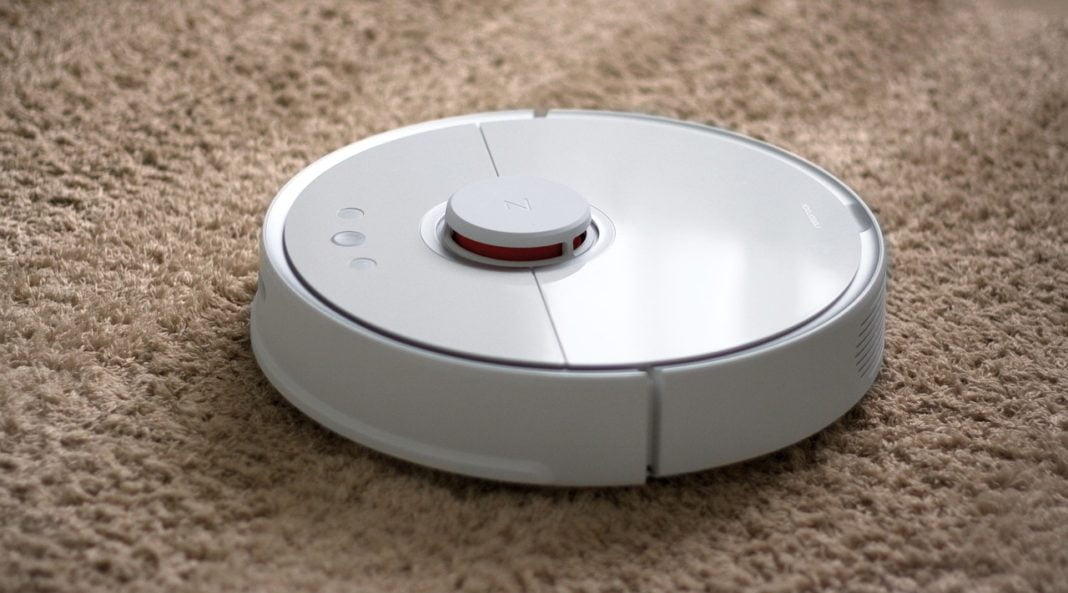A robot vacuum is a small, autonomous device that uses sensors and software to navigate and clean the floors in a home or office. It typically has a motorized brush or roller that helps to sweep up dirt, dust, and other debris from carpets and hard surfaces. Some robot vacuums also have additional features, such as the ability to empty their own dustbin or to mop floors.
One of the main advantages of using a robot vacuum is convenience. With a robot vacuum, you can set it to clean your floors on a regular schedule, or you can control it remotely using a smartphone app. This means you don’t have to spend time vacuuming yourself, and you can keep your floors clean even when you’re not home.
Robot vacuums are also relatively low maintenance, as they don’t require you to replace bags or filters like traditional vacuums do. They are also typically quieter than traditional vacuums, making them a good choice for homes with pets or children.
However, there are also some limitations to consider when it comes to robot vacuums. They may not be as powerful as traditional vacuums, and may not be able to pick up larger pieces of debris or deep clean carpets as effectively. They also tend to be more expensive than traditional vacuums, and may not be suitable for larger homes or homes with multiple floors.
Overall, a robot vacuum can be a useful tool for keeping your floors clean, but it’s important to weigh the pros and cons and consider your specific needs before making a purchase.
Say Goodbye To Your Old Vacuum Cleaner!

- Navigation: Most robot vacuums use sensors and software to navigate around a room and avoid obstacles. Some models use a laser-based system to map out the layout of the space, while others use a camera or ultrasonic sensors. Some models also have virtual walls or boundary markers that you can set up to keep the vacuum out of certain areas.
- Suction power: The suction power of a robot vacuum can vary depending on the model and price point. Higher-end models tend to have more powerful motors and larger dustbins, which can help them pick up more debris in a single pass. However, even the most powerful robot vacuums may not be able to match the suction power of a traditional upright or canister vacuum.
- Battery life: Most robot vacuums run on a rechargeable battery, and the battery life can vary greatly depending on the model. Some models can run for several hours on a single charge, while others may only be able to run for an hour or two. Some models also have the ability to return to their charging base when the battery is low and then resume cleaning when the battery is charged.
- Price: Robot vacuums can range in price from around $100 to several thousand dollars, depending on the features and performance. Higher-end models tend to have more advanced navigation systems, more powerful motors, and a wider range of cleaning modes and features.
- Maintenance: One of the main benefits of robot vacuums is that they require relatively little maintenance. You will need to empty the dustbin and clean the filters periodically, but you won’t need to replace bags or filters like you do with traditional vacuums. Some models also have self-emptying dustbins or can be emptied remotely using a smartphone app.
- Additional features: Some robot vacuums have additional features that can make them more convenient or versatile. For example, some models have the ability to mop floors or to dispense cleaning solutions, while others have built-in air purifiers or UV lights to help kill germs and bacteria. Some models also have voice control capabilities or can be controlled using a smartphone app.
The Future of Cleaning Is Here!

- Types of surfaces: Most robot vacuums are designed to work on a variety of surfaces, including carpets, hardwood floors, tile, and linoleum. Some models may have specific cleaning modes or settings for different types of surfaces, such as a gentle setting for hardwood floors or a more powerful setting for carpets. However, keep in mind that robot vacuums may not be as effective at deep cleaning carpets as traditional vacuums, and may struggle to pick up larger pieces of debris or pet hair.
- Size and shape: Robot vacuums come in a range of sizes and shapes, from small, circular models to more rectangular shapes. The size and shape of the vacuum can affect its ability to navigate around furniture and tight spaces, as well as its ability to reach under sofas and other low-lying areas.
- Noise: Most robot vacuums are quieter than traditional vacuums, but the level of noise can still vary depending on the model. If noise is a concern, you may want to look for a model with a low decibel rating, or consider reading reviews from other users to get a sense of how loud the vacuum is in practice.
- Scheduling: Many robot vacuums have the ability to be scheduled to clean at specific times of day or on certain days of the week. You can typically set this up using the vacuum’s accompanying smartphone app or by using the controls on the vacuum itself. This can be a convenient way to ensure that your floors are always clean, even when you’re not home.
- Remote control: Some robot vacuums can be controlled remotely using a smartphone app or a remote control. This can allow you to start, stop, or pause the vacuum from a distance, as well as set cleaning schedules or adjust the vacuum’s settings. This can be especially convenient if you need to clean up a spill or mess while you’re not home.



